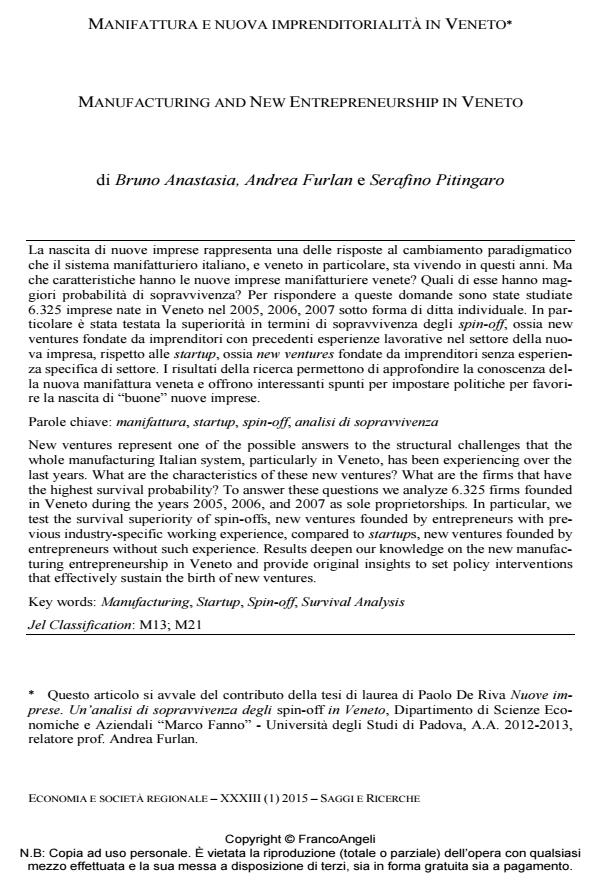Manufacturing and new entrepreneurship in veneto
Journal title ECONOMIA E SOCIETÀ REGIONALE
Author/s Anastasia Bruno, Andrea Furlan, Serafino Pitingaro
Publishing Year 2015 Issue 2015/1
Language Italian Pages 23 P. 102-124 File size 308 KB
DOI 10.3280/ES2015-001009
DOI is like a bar code for intellectual property: to have more infomation
click here
Below, you can see the article first page
If you want to buy this article in PDF format, you can do it, following the instructions to buy download credits

FrancoAngeli is member of Publishers International Linking Association, Inc (PILA), a not-for-profit association which run the CrossRef service enabling links to and from online scholarly content.
New ventures represent one of the possible answers to the structural challenges that the whole manufacturing Italian system, particularly in Veneto, has been experiencing over the last years. What are the characteristics of these new ventures? What are the firms that have the highest survival probability? To answer these questions we analyze 6.325 firms founded in Veneto during the years 2005, 2006, and 2007 as sole proprietorships. In particular, we test the survival superiority of spin-offs, new ventures founded by entrepreneurs with previous industry-specific working experience, compared to startups, new ventures founded by entrepreneurs without such experience. Results deepen our knowledge on the new manufacturing entrepreneurship in Veneto and provide original insights to set policy interventions that effectively sustain the birth of new ventures.
Keywords: Manufacturing, Startup, Spin-off, Survival Analysis
Jel codes: M13; M21
Anastasia Bruno, Andrea Furlan, Serafino Pitingaro, Manifattura e nuova imprenditorialità in veneto in "ECONOMIA E SOCIETÀ REGIONALE " 1/2015, pp 102-124, DOI: 10.3280/ES2015-001009